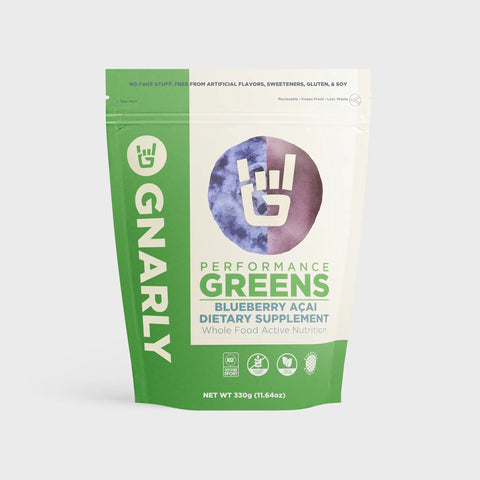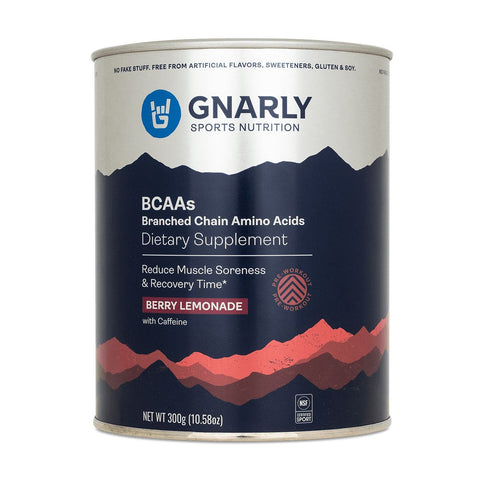Aging is a natural part of life, but aging does not have to be a barrier to performance. As athletes, our best approach to ensure that we can continue training and performing at optimal levels is to maintain our health. The sooner we dedicate time to nourishing our bodies, the more we are able to give to our sport. With age comes more self-awareness and caution, along with a more concerted effort toward injury prevention, rest and longevity.
What happens when we age?
From conception to birth, thousands of microscopic changes are taking place, allowing us to develop. The same can be said from adolescence to adulthood – we are always growing! The human body is in a constant state of flux, with minor tweaks and fixes happening within our cells to sustain life. Throughout life, these changes to our cells, immune system, endocrine system and energy metabolism impact how our bodies function and respond to training. Our body’s systems operate in tandem with one another, which means that the changes that begin with aging have a widespread effect on performance.
The immune system is activated when we exercise, which is considered physiological stress on the body. The workload determines the amount of stress and subsequent immune responsiveness. A normal response with immune system activation is inflammation, which has an important role in cell-signaling to stimulate anabolic changes. For lifelong athletes who perform habitual exercise, the consistent immune system activation delays dysfunction brought about by aging.1 However, chronic inflammation from other external sources, including work, relationships, environmental pollutants, and poor nutrition, becomes damaging to the body. Additionally, age-related inflammation (i.e. inflamm-aging) is linked to chronically-activated immune cells and impacts cell signaling capacity. (2) This means that as we age, chronically-elevated inflammation can lead to reduced anabolic capacity and increased disease risk.
Metabolic disregulation is another consequence of aging. The energy systems that oxidize substrates (carbohydrates, fatty acids and amino acids) to produce adenosine triphosphate (ATP, i.e. energy) change with age, with possible reductions in efficiency. (2) In older adults, anabolic resistance (i.e. reduced capacity to stimulate muscle protein synthesis) impairs skeletal muscle development.3 In order to combat this, dietary strategies need to be implemented and maintained (more on this below).
Age-related hormonal changes affect performance. Throughout life, hormonal fluctuations occur to allow us to grow, develop, and reproduce. As we age, secretory patterns and cyclical feedback mechanisms begin to slow. Our natural production of growth hormone declines, which impacts muscle mass and body fat. Sex hormone synthesis is also reduced in both men and women. Because sex hormones are largely responsible for muscle definition, body fat control and bone health, lower levels contribute to changes in how we respond to training and how we perform.4
Although these changes reflect potential obstacles, being a lifelong athlete has its advantages. Maintaining physical fitness – regardless of the level – improves longevity and considerably reduces the risk of developing age-related diseases.
Nutritional support for longevity in sports
A central component of maintaining health and performance is meeting our energy needs based on our training, activity type and duration of activity. At any age, it is important to take in enough energy to meet energy output. When training intensity declines, so does the requirement to take in as much energy. For older adults, calorie requirements needn’t be dramatically reduced if training status and body mass are maintained. Calculations for calorie and macronutrient recommendations are not a perfect science. But if you are concerned about ingesting enough energy, you may find these tools useful. My favorite calculation is referred to as Mifflin-St. Jeor. I use this calculation because unlike some of the other equations out there, Mifflin-St. Jeor more accurately represents caloric requirements of athletes and incorporates an activity factor. With all nutrition-based calculations, experiment with what works for you and remember that a calculation will not always reflect your needs.

Mifflin-St. Jeor Equation:
First, calculate your Basal Metabolic Rate (BMR; energy expenditure at rest).
MEN
BMR = 10 x weight (kg) + 6.25 x height (cm) – 5 x age (y) + 5
WOMEN
BMR = 10 x weight (kg) + 6.25 x height (cm) – 5 x age (y) – 161
Second, multiply BMR by an activity factor (see table below). This is your estimated calorie requirement to support health, metabolic functionality and performance.
|
Level of Activity |
Activity Factor |
|
Sedentary |
1.2 |
|
Lightly active (light exercise 1-3 days/week) |
1.375 |
|
Moderately active (moderate exercise 3-5 days/week) |
1.55 |
|
Very active (hard exercise 6-7 days/week) |
1.725 |
|
Extra active (very hard exercise 2 times/day) |
1.9 |
A well-balanced diet is the cornerstone of good health. Consuming adequate carbohydrates, protein and fat, along with a variety of fruits and vegetables, sustains energy levels, mental health, body system functionality and general wellbeing. Although a balanced diet is essential to long-term health, protein is especially important for the aging athlete. Muscle protein synthesis (MPS) is normally stimulated in response to protein consumption or exercise. In older adults, these stimuli are impaired, thereby reducing MPS. (3) It is therefore imperative that older athletes pay careful attention to ingesting protein after exercise to maximize MPS. Studies have indicated that 40 grams of high-quality protein, such as whey, eggs or pea protein is an optimal dose for anabolic stimulation in older athletes. Doses of 20 to 30 grams may be more appropriate for younger athletes. (5,6)
Supplementation and key foods
I always take a food-first approach when it comes to both macro- and micronutrient requirements. But supplements are great to help support what we often lack in our diets. Oftentimes I suggest key foods to clients to boost a specific nutrient. If more support is needed, I recommend supplemental nutrient forms. Supplements are especially useful when we age due to reduced nutrient absorption. The supplements and key foods below are intended to support baseline health*.
Protein & Collagen
Make sure you are ingesting enough protein to support MPS. Protein powders (both whey and plant-based) provide high-quality protein and boost what may be lacking in the diet.
Collagen supplementation can help improve collagen synthesis, which may help reduce risk of injury to connective tissues. (7,8)
Branched-chain amino acids (BCAAs)
Take these before or during your training or performance sessions. Ingestion can help stimulate MPS and reduce delayed onset muscle soreness (DOMS). (9) BCAAs are also present in a variety of foods, including dairy products, animal-based proteins, eggs, soy products and legumes.
Bone density support
Eat enough calories and macronutrients. Calorie restriction causes porous bones. (10) Current evidence does not support the popular belief that calcium supplementation prevents fractures. (11) Supplementation disrupts the body’s natural absorption and release cycle. Instead I recommend optimizing calcium levels by consuming canned salmon, yogurt, seeds, beans, Chinese cabbage and molasses. A good rule to remember is “beans and greens,” which is the best non-dairy strategy for meeting sufficient calcium intake.
Vitamin d
As we age, our skin’s ability to synthesize vitamin from sunlight declines. Additionally, most people do not meet daily vitamin D needs due to insufficient sun exposure. Aim for 1000 IU/day to help improve the immune system, increase neuromuscular function and reduce pathological conditions. (12) This dose may need to be increased if you live in the far north or during winter months. Dairy products fortified with vitamin D, eggs and liver/organ meats are excellent sources, as well.
*NOTE: Supplements are a personal choice based on needs, preferences, pre-existing conditions and finances. Discuss any supplements with your primary care doctor before beginning a new regimen as some may not be appropriate for you.
Additional steps for longevity
To continue training and performing throughout your life, take care of your wellbeing. Below are a few recommendations.
Continue to train
You are less likely to see an incremental decline with age by maintaining a level of performance.
Stretch
Maintaining flexibility in addition to strength will help you stay limber. Stretching also increases blood flow, which helps the healing process.
know your limits
Become aware of how your body feels during your training and performance sessions. If you are approaching your absolute limits on a continuous basis, consider reducing your workload to protect your body from injury.
Take rest days
You may find that you need more rest days in order to bounce back. If you have mixed performance days, can’t take the time to eat balanced meals, have work/home life stress or feel fatigued, take a rest day.
get regular check-ups
Routinely visit a doctor regardless of your age. Check for any trends or patterns with blood work. Staying on top of your basic health helps identify problems early on so they can be addressed.
Final thoughts
As we age, metabolic and physiologic changes are inevitable. Preparing for these changes by taking care of ourselves throughout the various stages of our lives will ensure that we continue performing at peak levels. We can best prepare for the future by improving our nutrition, lifestyle and recovery techniques. Getting older may mean that we have less time to devote to training, but this does not mean we still can’t compete or maintain fitness. In order to continue doing what we love, we must take care of ourselves!
works cited
- Nieman, D., Wentz, L.M. (2019). The compelling link between physical activity and the body’s defense system. Journal of Sport and Health Science, 8, 201-217. https://doi.org/10.1016/j.jshs.2018.09.009
- Parker, D., et al. (2019). Age-related adverse inflammatory and metabolic changes begin early in adulthood. J Gerontol A Biol Sci Med Sci, 74(3), 283-289. doi:10.1093/gerona/gly121
- Berrazaga, I., Micard, V., Gueugneau, M., and Walrand, S. (2019). The role of the anabolic properties of plant- versus animal-based protein sources in supporting muscle mass maintenance: A critical review. Nutrients, 11, 1825. doi:10.3390/nu11081825
- Banks, W.A., & Morley, J.E. (2000). Endocrine and metabolic changes in human aging. Age, 23, 103-115. doi:10.1007/s11357-000-0011-z
- Yang Y, Breen L, Burd NA, Hector AJ, Churchward-Venne TA, Josse AR, et al. (2012). Resistance exercise enhances myofibrillar protein synthesis with graded intakes of whey protein in older men. Br J Nutr, 108, 1780–8. doi:10.1017/S0007114511007422
- Moore DR, Robinson MJ, Fry JL, Tang JE, Glover EI, Wilkinson SB, et al. (2009). Ingested protein dose response of muscle and albumin protein synthesis after resistance exercise in young men. Am J Clin Nutr., 89, 161–8. doi:10.3945/ajcn.2008.26401
- Clark, KL, et al. (2008). 24-week study on the use of collagen hydrolysate as a dietary supplement in athletes with activity-related joint pain. Current Medical Research and Opinion, 24(5), 1485–1496. doi:10.1185/030079908×291967
- Schunck, M, Oesser, S. (2013). Specific collagen peptides benefit the biosynthesis of matrix molecules of tendons and ligaments. J Int Soc Sports Nutr, 10, P23. doi:https://doi.org/10.1186/1550-2783-10-S1-P23
- Dudgeon, W. D., Kelley, E. P., & Scheett, T. P. (2016). In a single-blind, matched group design: branched-chain amino acid supplementation and resistance training maintains lean body mass during a caloric restricted diet. Journal of the International Society of Sports Nutrition, 13, 1–10. doi:https://doi.org/10.1186/s12970-015-0112-9
- McGrath, C., Sankaran, J.S., Misaghian-Xanthos, N., et al. (2019). Exercise degrades bone in caloric restriction, despite suppression of marrow adipose tissue (MAT). Journal of Bone and Mineral Research, 35(1), 106-115. doi:https://doi.org/10.1002/jbmr.3872
- Bolland, M.J., Leung, W., et al. (2015). Calcium intake and risk of fracture: Systematic review. BMJ, 351, h4580. doi:https://doi.org/10.1136/bmj.h4580
12. Gaby, A. (2011). Nutritional Medicine. Fritz Perlberg Publishing: Concord, NH. doi:10.7453/gahmj.2013.2.1.013





